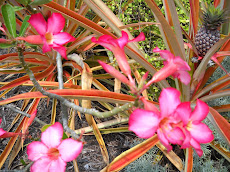It was New Year’s Eve. I had prepared a colorful vegan meal for my partner and I to enjoy before reigning in the New Year. The menu included a living corn chowder, sweet potato puree, and basmati rice drizzled with a Thai coconut sauce. We were planning on visiting with a few friends after dinner and then back home before the clock struck midnight to toast our first New Year’s Eve together. The special bottle of merlot we had been saving for this very night would top it all off. About half way through dinner I began to feel unnecessarily irritable, and before I knew it my mood was swinging down into the depths of a monthly premenstrual syndrome. I no longer suffered from cramping thanks to some positive dietary changes made years ago. However, I still felt annoyingly on edge for a short period of time every a month, and it was beginning to wear on my very last nerve. Needless to say, my New Year’s Eve was only so-so, and the following day I made my first resolution. I will find some simple, natural cures for the PMS blues.
Let us first take a look at what causes premenstrual syndrome symptoms such as irritability, bloating, cravings for sweets, increased appetite, fatigue, cramping, depression, and mood swings. Research has found that these symptoms are more prevalent in women with high levels of blood estrogen compared to progesterone. Dietary deficiencies in certain vitamins and minerals can also aggravate PMS. Some years ago, I routinely suffered from severe cramps that would keep me in bed for hours at a time. Some months an entire day would go to waste. The positive changes I made were mostly dietary. I started eating less meat and completely eliminated dairy because large amounts of dairy may be associated with irritability, anxiety, and mood swings. My diet focused on organic vegetables-especially leafy greens which are a good source of trace minerals necessary for calcium absorption. I also did a lot of dancing which allowed me to sweat a lot and considerably relieve stress levels. Avoiding refined carbohydrates, including sugar, corn sweeteners, honey, maple syrup, white flour products, dried fruit, and fruit juice is a also a necessary step. As you can see, sugars in all forms are pretty much off limits. In addition, raw nuts, seeds and whole grains are great sources of nutrients needed during the dreaded PMS time.
It’s also a good idea to avoid caffeine. Coffee, tea, chocolate and sodas cause fluctuations in blood sugar levels. These fluctuations contribute to cravings and add additional stress to the body. Leave the alcohol to the boys as it dehydrates the body, leading to increased premenstrual symptoms. Drink lots of water and herbal teas. I find those in the mint family very uplifting. Chamomile and lavender teas help to calm the nerves, while a smooth sweet orange tea is a great mood booster.
Yoga is a great antidote to PMS because it calms the central nervous system, releases endorphins and encourages relaxation while lowering stress levels. Particular postures are known to be especially helpful during this time of the month. For irritability and anxiety, practice reclined bound angle pose, downward facing dog, and standing forward bend. For depression and fatigue, try half plow pose with legs on a chair. For cramps, try legs-up-the-wall pose with the sacrum on a bolster, wide-legged standing forward bend and bridge pose. If you are prone to headaches and bloating, incorporate reclining hand to big toe pose with legs out to side. Supplement your practice with deep breathing techniques and quiet meditation. Alternate nostril breathing (nadi shodana) is a good one to focus on as it is straightforward and helps to balance mood swings and emotions. Once your cycle begins, avoid yoga inversion poses because the blood and energy is trying to flow downward and you don’t want to upset that flow.
As PMS is sometimes associated with a lacking in vital nutrients, it is always ideal to keep a high-quality multivitamin on hand. This alone has the power to improve symptoms. I like to take an extra supplement of Vitamin C during this time because it is a general energy booster and also helps to rid the body of excess estrogen. Make sure your multi-vitamin is sufficient in Vitamin E, which can help reduce nervous tension, depression, and headaches. The B vitamins are also necessary for proper nervous system function. Vitamins A, D, calcium, magnesium and zinc are also essential during the PMS phase of the month. I also make sure to supplement with flax seed oil which is a good source of essential fatty acids. It is anti-inflammatory in nature and can ease pain while boosting energy.
Herbs are always good for additional help. Shatawari is an ayurvedic herb that is most often prescribed for the PMS sufferers among us by ayurvedic doctors. It is referred to as the Indian female rejuvenative and is also helpful for low milk production, a lagging sex drive, menopause and infertility. Milk thistle is helpful because it protects the liver which in turn helps regulate hormonal balance. If bloating and sore breasts predominate, chamomile and dandelion are both effective diuretics. To stabilize depression and mood swings, chamomile, lavender, and peppermint are excellent. These herbs, along with red raspberry and kava kava, are good antispasmodics as well, making them excellent for cramps. Fennel, sarsaparilla, squaw vine, licorice and wild yam are all known to be hormonal balancers and can improve many PMS associated symptoms.
Good luck on your path to PMS success. The journey may be grueling some days but eventually the symptoms will improve. Be patient with yourself and try not to judge yourself or others. Accept the ups and downs and don’t try to fight it. Know that you are not alone. Most of us women are all sufferers and girlfriends are always good for emotional and moral support!
Thursday, April 15, 2010
Subscribe to:
Post Comments (Atom)












No comments:
Post a Comment